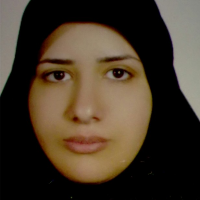Palynological evidences to reconstruct the paleoclimate of Upper Triassic deposits, South Tabas, central Iran
Author(s):
Article Type:
Research/Original Article (دارای رتبه معتبر)
Abstract:
Introduction
Very few palynological studies have been conducted on the Nayband Formation, as a part of the Upper Triassic coal deposits of central Iran. Mousavi, 2002 (seen in Aghanabati 2004, pp. 209-210) considered the abundance and diversity of marine palynomorphs compared to terrestrial types indicate the shallow sea environment for Nayband Formation. Cirilli et al., 2005 attributed the Nayband Formation palynofloras to tropical plants such as Bennettitales, Matoniaceae, and Marattiaceae accompanied by characteristic forms of the Siberian Province. Sabbaghiyan et al., 2015 examined the palynology of the Nayband Formation, Tabas Block. They believed the associated marine palynomorphs (dinocysts), accompanied by spores indicate a nearshore depositional environment for the Late Triassic deposits. Sajjadi et al., 2015 studied the palynology of the Nayband Formation, Kamar Macheh Kuh, southeastern Tabas. They concluded that the abundance of ferns and Coniferophytes in parent flora implies that the host strata accumulated under a moist warm climate with progressively decreasing temperatures during Late Triassic. Sabbaghiyan et al., 2020 investigated the palynology of the Upper Triassic Bidestan and Howz-e-Sheikh members in Tabas Block. They believed that co-occurrence of marine elements (dinoflagellate cysts, bivalves, corals, and gastropods) with terrestrial elements (spores and pollen) shows a shallow marine depositional environment for the Nayband Formation.Materials and methods
A total of 62 samples were collected from the Nayband Formation (Qadir Member), at exploratory well no. 948b. All samples were prepared following standard palynological processing procedures (Phipps & Playford, 1984), including HCl (10-50%) and HF (40%) utilized for the dissolution of carbonates and silicates, respectively. Then the residues were saturated with ZnCl2 solution (specific gravity 1.9 g/ml) for density separation. All the residues were sieved with a 20 μm mesh sieve previous to making strew slides. Three slides for each preparation were examined by a transmitted light microscope.Results and Discussion
To reconstruct the paleoclimate of the Nayband Formation (Qadir Member) in the south of Tabas, 62 samples were collected from exploration well no. 948b for palynological investigations. The assemblage of diverse palynomorphs includes spores and pollen of land plants, dinoflagellate cysts, foraminiferal test linings, acritarchs, and algal spores with moderate to good preservation. The parent plants of existing miospores show that the diversity and abundance of ferns is 64%, cycadophytes 16%, lycophyta 9%, conifers 4%, gynophytes 4%, pteridospermophyta 2% and Bryophyta 1%. The maximum diversity and relative abundance belong to miospores attributed to ferns (64%), which indicates the predominance of warm to semi-warm climate with high humidity at that time of deposition. Based on the model of Sporomorph EcoGroups, miospores typifying all six plant communities are present in the studied strata, but the highest frequency is related to the lowlands SEGs. To reconstruct the paleoclimate variation, the large quantity percentage of four main plant groups (Hydrophilic, xerophilic, Thermophilic, Psychrophilic) was calculated and the paleoclimate study was determined by the pattern of relative abundance of drier/wetter and warmer/cooler elements. The consequences of these calculations approve the warm to semi-warm climate with high humidity conditions. Also, the paleogeographic position of Iran during the Late Triassic in the southern active margin of Eurasia (Turan Plate) is another confirmation of this type of climate.Conclusion
Diverse palynomorphs with high abundance including spores, pollen, dinoflagellate cysts, foraminiferal test linings, acritarchs, and algal spores with moderate to good preservation are present in the studied material. Inferred natural relationships of the Nayband sporae dispersae imply derivation from a diverse parental flora such as ferns, Conifers, Lycophyta, Cycadophytes, Gynophytes, Pteridospermophyta, and Bryophyte. Ferns have relative abundance and maximum diversity in the composition of the vegetation around the sedimentary environment. It implies that the host strata accumulated under moist warm to semi-warm climates. In addition to, the high ratio of warmer/cooler, wetter/drier palynomorphs and the palaeogeographic position of Iran during the Late Triassic in the southern active margin of Eurasia (Turan Plate) and the location of Iran at a latitude of about 35°N, all confirm the above results that hot and humid climate prevails.Keywords:
Language:
Persian
Published:
Journal of Earth Science Researches, Volume:14 Issue: 56, 2023
Pages:
111 to 133
magiran.com/p2654410
دانلود و مطالعه متن این مقاله با یکی از روشهای زیر امکان پذیر است:
اشتراک شخصی
با عضویت و پرداخت آنلاین حق اشتراک یکساله به مبلغ 1,390,000ريال میتوانید 70 عنوان مطلب دانلود کنید!
اشتراک سازمانی
به کتابخانه دانشگاه یا محل کار خود پیشنهاد کنید تا اشتراک سازمانی این پایگاه را برای دسترسی نامحدود همه کاربران به متن مطالب تهیه نمایند!
توجه!
- حق عضویت دریافتی صرف حمایت از نشریات عضو و نگهداری، تکمیل و توسعه مگیران میشود.
- پرداخت حق اشتراک و دانلود مقالات اجازه بازنشر آن در سایر رسانههای چاپی و دیجیتال را به کاربر نمیدهد.
In order to view content subscription is required
Personal subscription
Subscribe magiran.com for 70 € euros via PayPal and download 70 articles during a year.
Organization subscription
Please contact us to subscribe your university or library for unlimited access!





